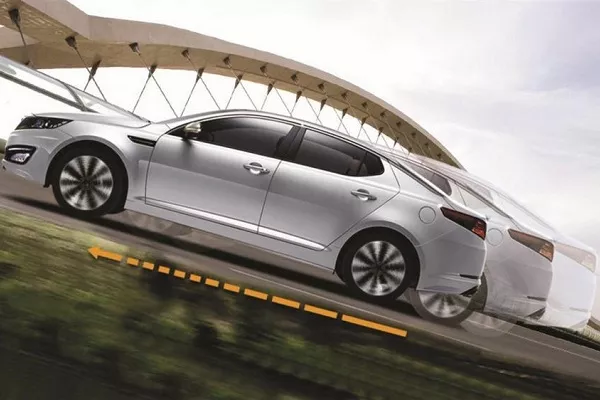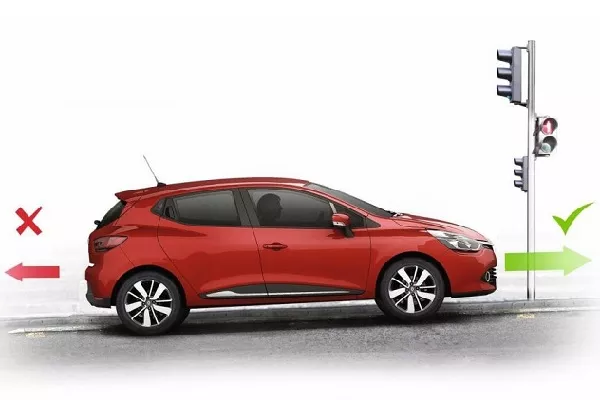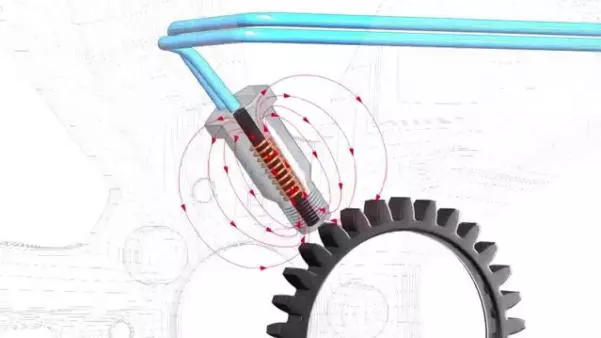The Hill-start Assist Control (HAC) and Downhill Assist Control (DAC) have the function to protect the car from slipping when it stops. It also helps start the car in the middle of an inclined surface or in the middle of a downhill road.
However, Philkotse.com is sure that not all car owners know what exactly these features are and how they are operated. That's why we're here to help all car users get a better underdstanding of the Hill-start Assist Control (HAC) and Downhill Assist Control (DAC).
I. The history of the Hill-start Assist Control (HAC) & Downhill Assist Control (DAC)
The precursor of the Hill-start Assist Control (HAC) is the Hill Holder. Invented by the Wagner Electric Group and Bendix Brake Company, Hill Holder was designed to carry out the function of preventing the vehicle from slipping down when it parks in the middle of a pass or slope.
Hill Holder was first introduced to the public in 1936. A year later, this new automotive technology was officially equipped on many models which were manufactured by Studebaker President. These days, most car models are equipped with an advanced hill-start to assist control system.

The precursor of the Hill-start Assist Control (HAC) is the Hill Holder
II. What do the Hill-start Assist Control (HAC) and Downhill Assist Control (DAC) do in an actual driving condition?
When parking in the middle of a hill, the driver must release the brake and apply the gas pedal at the same time if he wants the car to start moving. At this point, according to the principle of normal operation, the car is likely to slip or drift, and, as a reaction, the driver must hit the gas pedal even more. If you are lucky, the car will start to roll on.
But in the worst case, you may crash into another car or lose control of your vehicle. However, with the hill-start assist control (HAC) system, the moment the driver leaves his foot off the brake pedal, the brakes will still work to keep the car in a stationary state. Only when the driver applies the gas pedal, does the brake start to release and the car could move forward.

The operating principle of the Hill-start Assist Control (HAC) and Downhill Assist Control (DAC)
The Downhill Assist Control (DAC) is designed to have the function of making the car move slowly and safely while it is going down a hill. In addition, the DAC could normally be activated by pushing a trigger button, which provides you with higher flexibility in operating the car and makes the system work at your own discretion.
III. Operation principles of the Hill-start Assist Control (HAC) and Downhill Assist Control (DAC)
The Hill-start Assist Control (HAC) and Downhill Assist Control (DAC) receive more and more attention and improvement over time, and they are integrated with many modern technologies. However, the fundamental operation mechanism is the same for all variants. The systems carry out their functions through a system of sensor that is designed to detect the angle of the car. This system then coordinates with other sensors through the ECU central controller to control the operation of the clutch as well as be in charge of the brake system and govern the distribution of torque to each wheel.
1. Tilt Detection Sensor
If the vehicle stops on a steep plane (5 degrees or higher) while the engine is still on, the tilt detection sensor will start working, which sends a signal to the Electronic control unit (ECU). After that, the ECU will calculate the likelihood of a car slipping. The disadvantage of this sensor is that when the car runs into potholes or when the car body is tilted, the sensor by default still assumes that the car is running on a certain slope.
2. The electronic control unit (ECU)
This is the central component responsible for handling the signals which are sent from the car's sensors. Based on the input signals, the ECU will decide to apply the brake, adjust the compression of the damper as well as determine the slope of the road to set the required braking force and torque to keep the vehicle moving
3. Wheel rotation sensor
Each wheel is equipped with a speed sensor. These sensors use a rotating magnet. When the wheel moves while the engine is not running, a magnetic field will be generated, which is encoded into a signal to be sent to the ECU.

Wheel Speed Sensor Operation
4. Suspension pressure sensor
This is a part of the suspension system to help determine the weight of the car which considers both the weight of passengers and loaded cargo. This sensor sends signals to the ECU to calculate the system's performance to match the vehicle's weight.
5. Brake control
With an automatic transmission, if the car stops in the middle of a hill, the ECU will control the braking system when the driver leaves his foot off the brake pedal for a short period of time, enough for him to switch to the gas pedal and make the car move forward. In the case of going down a hill, the DAC system will be activated to help the car not move too fast or not run out of control even when the driver does not apply any force on the brake pedal.
6. Brake pressure sensor
As soon as the signal that the car is drifting is received, the ECU will automatically command the brake system to operate, which helps avoid the car drifting. The brake pressure whether it is low or high will be controlled by these brake pressure sensors.

Button to activate the downhill assist control (DAC)
7. Clutch operation
Experienced experts on car driving say that for a manual transmission car equipped with the HAC system, you must disengage the clutch when you start the engine or shift the gear. At this point, the signal generated will be sent to the ECU to determine when to activate the brake system to keep the car stable.
8. Torque control
It is designed to help the car avoid drifting or skidding when the car starts to run. When the car accelerates in a normal manner, the control system will automatically switch off. The sensors could be capable of accurately determining how much torque is necessary to be transmitted to the wheels through the transmission to keep the car moving safely.
>>> Click to get more helpful tips and advice for all car owners
Recent posts
- Top Tips for Pinoy Drivers When Driving Uphill in Automatic Cars Nov 08, 2022
- What should we do with an out of control car? Oct 08, 2018
- Driver-assistance features and a peace of mind! Oct 04, 2018











